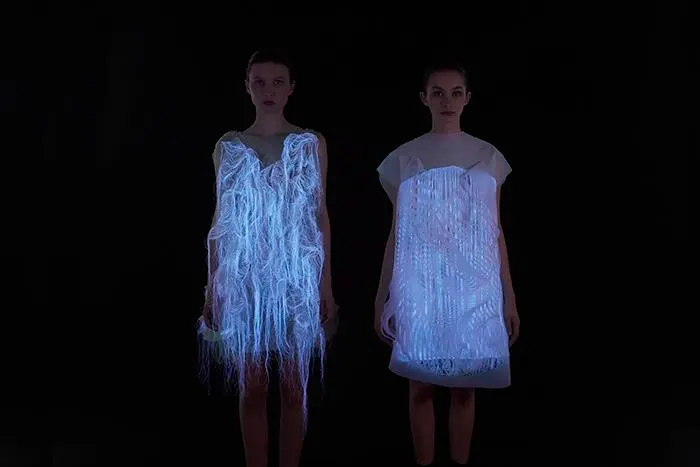The intersection of technology and fashion has revolutionized the industry, bringing about transformations that were once the realm of science fiction. Two key areas where this impact is most profound are in the development of smart fabrics and the advent of digital runways. These innovations are not only changing how fashion is created and consumed but also how it functions in everyday life.
Smart Fabrics: The Future of Wearable Technology
Smart fabrics, also known as e-textiles, integrate technology into textiles to offer advanced functionalities beyond traditional fabrics. These innovations are paving the way for a new era in fashion, where clothing is not just about style, but also about function and interactivity.
- Health Monitoring: One of the most significant applications of smart fabrics is in health and fitness. These fabrics can monitor vital signs such as heart rate, body temperature, and even hydration levels. For instance, companies like Hexoskin have developed shirts that can track the wearer’s physiological data, which is particularly useful for athletes and individuals with medical conditions.
- Adaptive Textiles: Smart fabrics can also adapt to environmental conditions. For example, some textiles can change color or temperature based on the surrounding environment. This technology is not just about aesthetics but also about practicality. Imagine a jacket that warms up as the temperature drops or a dress that changes color to match the lighting of a room.
- Connectivity and Communication: With the Internet of Things (IoT) becoming more prevalent, smart fabrics can connect to other devices. This connectivity can allow for clothing that communicates with smartphones or other smart devices, enabling functionalities such as receiving notifications, making emergency calls, or even navigating through GPS signals embedded in the fabric.
- Sustainability: Smart fabrics can also contribute to sustainability in fashion. Some textiles are designed to be more durable and resistant to wear and tear, thereby extending the life of the garment. Additionally, innovations such as self-cleaning fabrics reduce the need for frequent washing, saving water and energy.
Digital Runways: Redefining Fashion Shows
The traditional fashion show is undergoing a digital transformation, driven by advancements in technology. Digital runways are becoming a new norm, offering numerous benefits over traditional fashion shows.
- Accessibility and Inclusivity: Digital runways break down geographical barriers, allowing people from all over the world to participate in and view fashion shows. This inclusivity means that fashion is no longer an exclusive event but a global experience. Brands can now reach a wider audience, including those who may not have had the means or opportunity to attend physical shows.
- Enhanced Creativity: The digital format allows for more creative freedom. Designers can incorporate augmented reality (AR) and virtual reality (VR) to create immersive experiences that go beyond the limitations of a physical runway. For example, Balenciaga’s 2021 Fall collection was presented through a video game, offering an interactive experience that engaged audiences in a novel way.
- Real-Time Analytics: Digital runways provide immediate feedback and analytics. Brands can track viewer engagement, preferences, and reactions in real-time. This data is invaluable for making informed decisions about future collections and marketing strategies.
- Sustainability and Cost Efficiency: Hosting a digital runway show is more sustainable and cost-effective compared to traditional shows. It eliminates the need for travel, extensive logistics, and large-scale physical setups. This reduction in resource consumption aligns with the growing trend towards sustainability in the fashion industry.
- Customization and Personalization: Digital platforms allow for a greater degree of customization and personalization. Viewers can choose their perspectives, interact with the show, and even try on outfits virtually using AR technology. This personalized experience can enhance customer engagement and satisfaction.
Conclusion
The convergence of technology and fashion through smart fabrics and digital runways is reshaping the industry. Smart fabrics are making clothing more functional and interactive, while digital runways are democratizing fashion shows and enhancing creativity. As these technologies continue to evolve, they promise to bring even more innovative changes to the fashion world, making it an exciting time for both designers and consumers. The future of fashion is here, and it is smarter and more connected than ever before.
